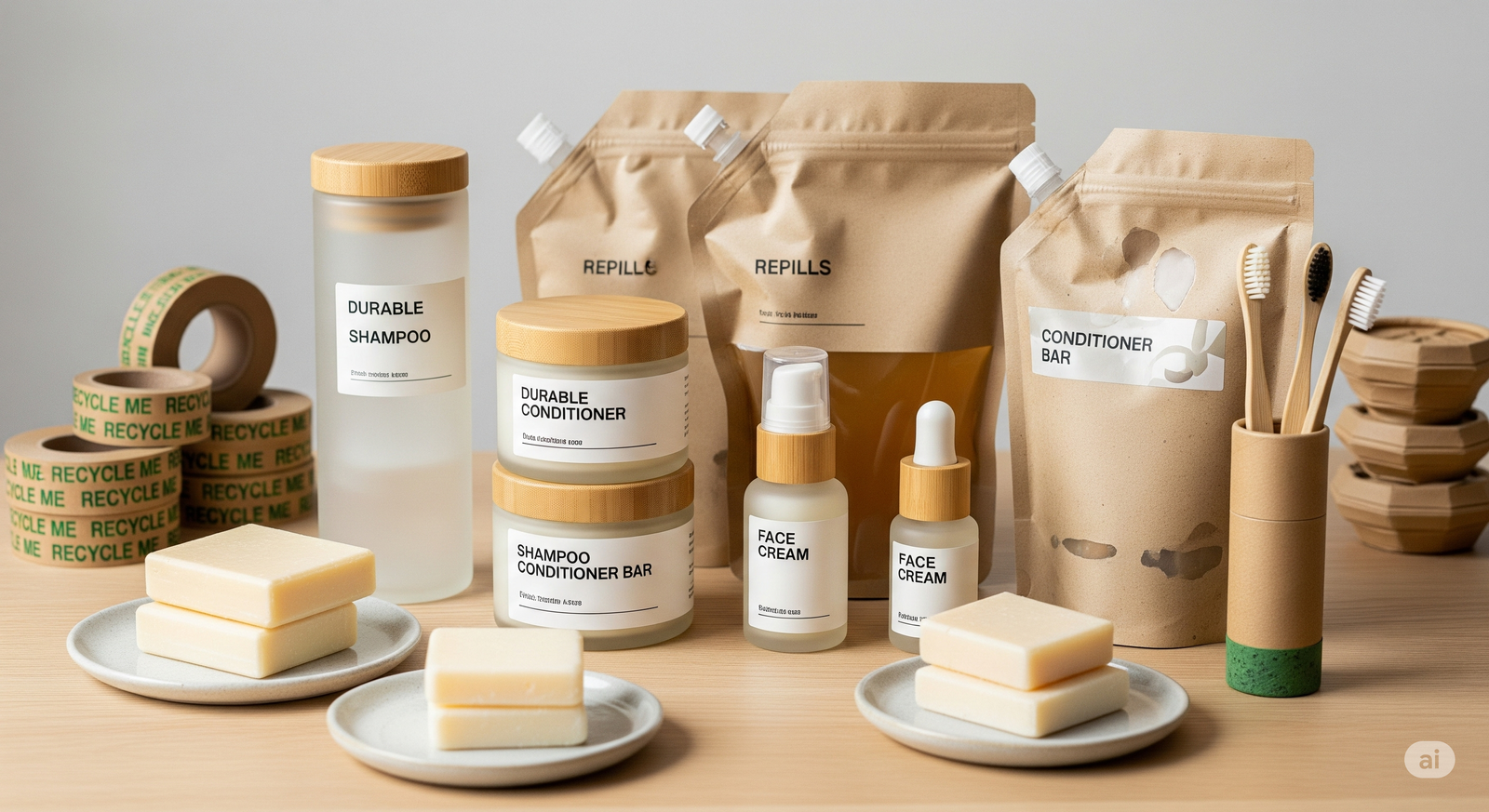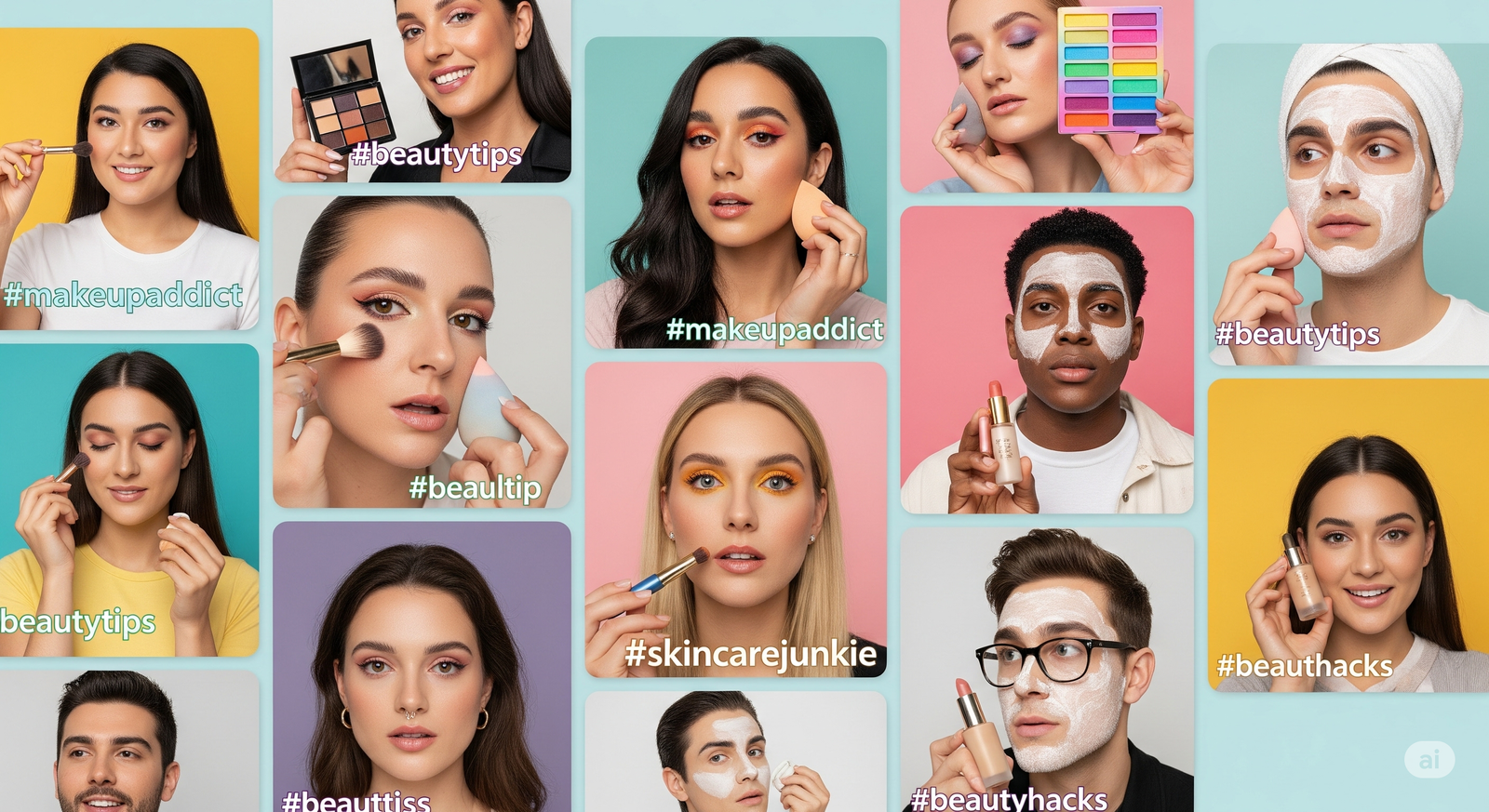Eco-Friendly Packaging: A Brand Differentiator in 2025 Beauty Market
Discover how sustainable beauty packaging and eco-friendly innovations are reshaping brand loyalty in 2025. Backed by Admigos sustainability analytics and trends.
26 Jul'25
By Niharika Paswan


Eco-Friendly Packaging: A Brand Differentiator in 2025 Beauty Market
As the global beauty market faces growing pressure to reduce environmental impact, packaging has become a new battleground for innovation. Today’s consumers are no longer just buying what’s inside the jar, they’re judging the jar itself. From refillable compacts to paper-based tubes, sustainable beauty packaging is fast becoming a brand’s first impression and a long-term trust signal. What used to be a niche positioning for clean brands is now a baseline expectation across the board.
At Admigos, we’ve tracked this evolution across D2C, luxury, and mass beauty players. Through Admigos sustainability analytics, we help brands benchmark their eco-packaging efforts against industry peers, spot greenwashing risks, and uncover what packaging stories actually move the consumer. The data confirms what many already suspect: green packaging isn’t a trend. It’s a strategic differentiator that’s driving brand loyalty in 2025. According to Euromonitor, 67% of beauty consumers globally prefer brands that offer environmentally responsible packaging. And it’s not just sentiment this shift is visible in cart behavior, retention rates, and even brand followership online.
Why Eco-Friendly Packaging Now Matters More Than Ever

Regulatory, environmental, and consumer pressures have converged. Beauty brands that once prioritized visual aesthetics above all are now reworking entire product lines to reduce plastic, shrink material use, and increase reusability.
Drivers accelerating the rise of eco-friendly packaging in beauty:
- Regulation: The EU’s Packaging and Packaging Waste Regulation (PPWR) mandates 100% recyclable packaging by 2030. India and the US have introduced similar EPR (Extended Producer Responsibility) laws.
- Retailer compliance: Sephora and Ulta now evaluate sustainability scores before onboarding new beauty lines.
- Carbon visibility: Brands are expected to share lifecycle emissions for each product, not just vague green claims.
- Consumer scrutiny: With apps like CodeCheck and Yuka, customers scan labels to check both ingredients and packaging impact.
A recent Mintel report shows that 52% of Gen Z beauty buyers in Asia-Pacific say they would switch brands if the packaging feels wasteful. And sustainability search terms like refillable lipstick or compostable cleanser sticks have risen steadily over the past 12 months on Google Trends.
In short, eco packaging is no longer a “nice to have.” It’s a credibility marker.
Admigos Sustainability Analytics: Data from the Packaging Frontlines
Over the past year, Admigos analyzed various beauty SKUs across several packaging-led campaigns. The data reveals clear patterns in what works, what flops, and how consumers actually perceive green beauty packaging trends.
Key insights from Admigos campaign data:
- Minimalist, refill-first packaging drove more saves on Instagram and Pinterest
- Packaging that explicitly listed materials (e.g., “70% post-consumer recycled plastic”) outperformed vague claims like “eco-conscious”
- Brands that used motion design to show the packaging disassembly, refill steps, or biodegradation process saw higher engagement than those that relied on text overlays
- TikTok or Instagram creators sharing “unboxing” of eco-packaged products generated more UGC reshares compared to conventional beauty PR mailers.
Packaging Frameworks That Align with Both Beauty and Sustainability

Designing for sustainability doesn’t mean compromising aesthetics. It requires rethinking the role of packaging, from outer box to product container and aligning it with both usage behavior and disposal practices.
Leading sustainable beauty packaging formats today include:
- Refillable systems: Seen in brands like Fenty Skin, Kjaer Weis, and Charlotte Tilbury. The initial unit feels luxe; the refill is often lower-cost and lower-carbon.
- Mono-materials: Products using a single type of material (like PE or aluminum) that’s easier to recycle across global facilities.
- Compostable formats: Brands like Ethique and SBTRCT use solid bar formats in paper cartons or compostable sleeves.
- Glass and aluminum: Gaining popularity for skincare serums and oils due to higher recyclability and perceived premiumness.
- Elimination of secondary packaging: Increasingly adopted in minimalist and direct-to-shelf brands to reduce waste and cost.
Admigos has helped brands audit their current packaging inventory and run consumer A/B tests to compare tactile appeal, shelf visibility, and disposal instructions. Meyer explores sustainable beauty packaging in their blog, highlighting key industry trends and emerging opportunities for brands.
Greenwashing or Green Truth? How Brands Can Earn Consumer Trust

Today’s consumer isn’t fooled by green-colored fonts or vague words like “natural” or “planet safe.” They want specifics. And they want proof. Greenwashing backlash is real and dangerous.
Ways to build credibility in eco-friendly packaging beauty brands:
- Use certifications like FSC (for paper), ECOCERT, or Cradle to Cradle where possible.
- Show comparative data (e.g., “uses 60% less plastic than our previous version”).
- Be honest about partial progress, e.g., “90% recyclable, pump not yet recyclable”.
- Offer clear disposal or refill instructions, QR codes work well.
- Engage sustainability creators who can break down packaging elements in user-friendly ways.
Content Strategies That Make Sustainable Packaging Visually Compelling
The challenge with green beauty packaging trends is that they’re often invisible at first glance. Recycled plastic looks like plastic. Paper-based palettes may not scream luxury. So it becomes a creative brief: How do you make sustainability scroll-stopping?
Creative content types that drive attention:
- Motion storytelling: Show packaging from unboxing to recycling to reinforce eco steps.
- Texture close-ups: Highlight matte papers, frosted glass, or aluminum’s cold touch.
- Swipeable carousels: Before vs after packaging redesigns.
- Explainer videos: Breaking down the material types and their eco advantages.
- Routine integrations: Position the packaging as part of the experience and not just the container.
- Admigos helps brands map these creative formats to platform performance. For example, 15-second reels showing a refill mechanism in action consistently beat standard product demos in both watch time and save rates. Josh Rosebrook outlines the advantages and challenges of adopting sustainable packaging in the beauty industry.
Admigos as Your Sustainability Intelligence Partner
The beauty industry is full of sustainable claims. What brands need is actionable intelligence backed by behavior data, performance metrics, and cross-market analysis.
Through Admigos sustainability analytics, beauty brands get access to:
- Comparative benchmarks across similar SKUs and categories
- Region-wise packaging compliance forecasts
- Consumer sentiment tracking on unboxing and refill experience
- Heatmaps and save or click data for packaging-led ad creatives
- Trend reports on emerging formats (e.g., pump-free, dissolvable film, reusable containers)
Final Take: Sustainability Is No Longer Optional, It’s Advantage
In 2025, eco-friendly packaging beauty brands are not outliers, they’re the new standard. And while formulas still matter, how a product arrives and what it leaves behind are now part of the purchase decision. From regulations to retailer pressures to consumer shifts, the writing is on the (recycled) wall. Brands that invest early in sustainable formats, storytelling, and data validation stand to build stronger loyalty and resilience in a rapidly evolving beauty landscape.
Admigos helps brands move from intention to implementation. With analytics that decode what green means for your category, we make sustainable beauty packaging not just good for the planet but good for performance too.
— By Niharika Paswan
Micro-Influencers: The Secret Weapon for Beauty Brand Growth
Discover how beauty micro-influencers drive authentic engagement and brand growth. Explore Admigos influencer insights for smarter beauty brand influencer strategy.

Building Brand Loyalty with AI-Driven Customer Insights
Discover how beauty brands use AI customer insights and data-driven marketing to refine products, build loyalty, and personalize experiences with Admigos analytics.
